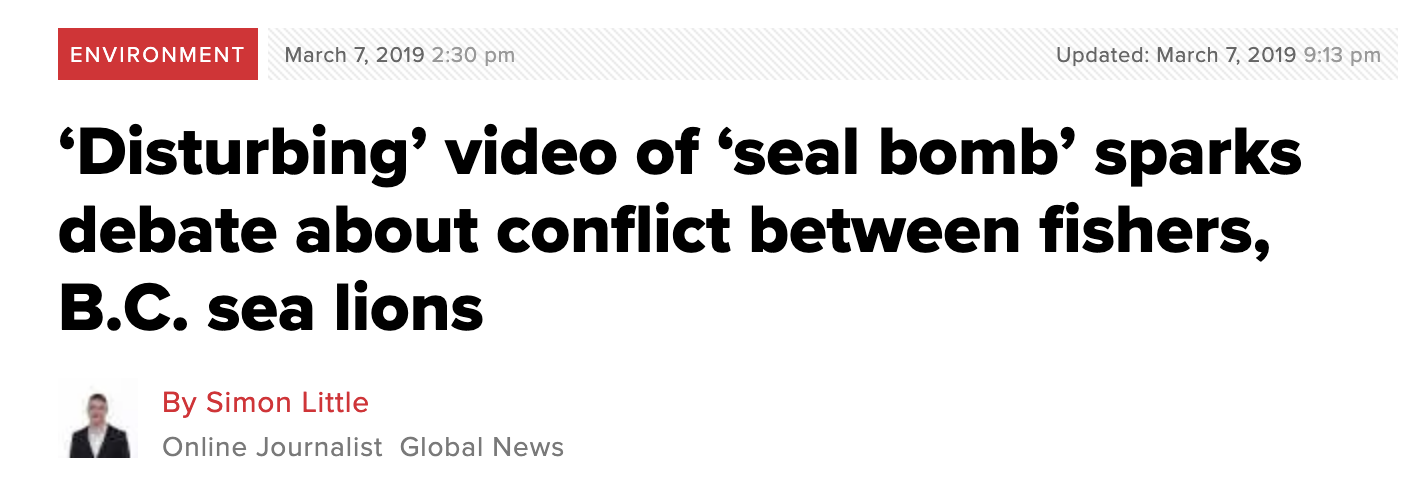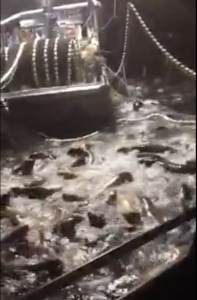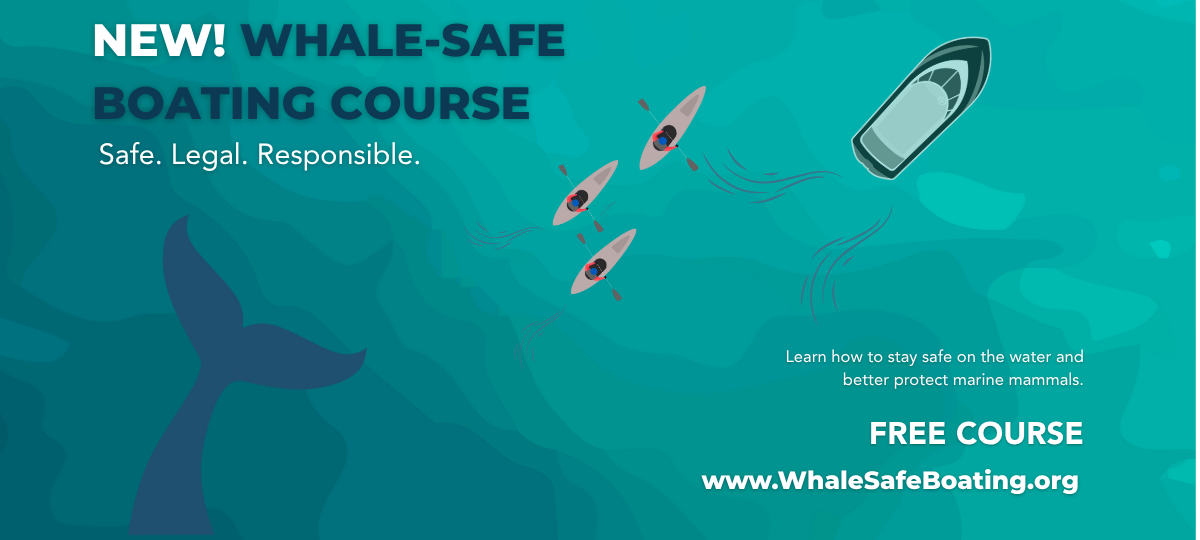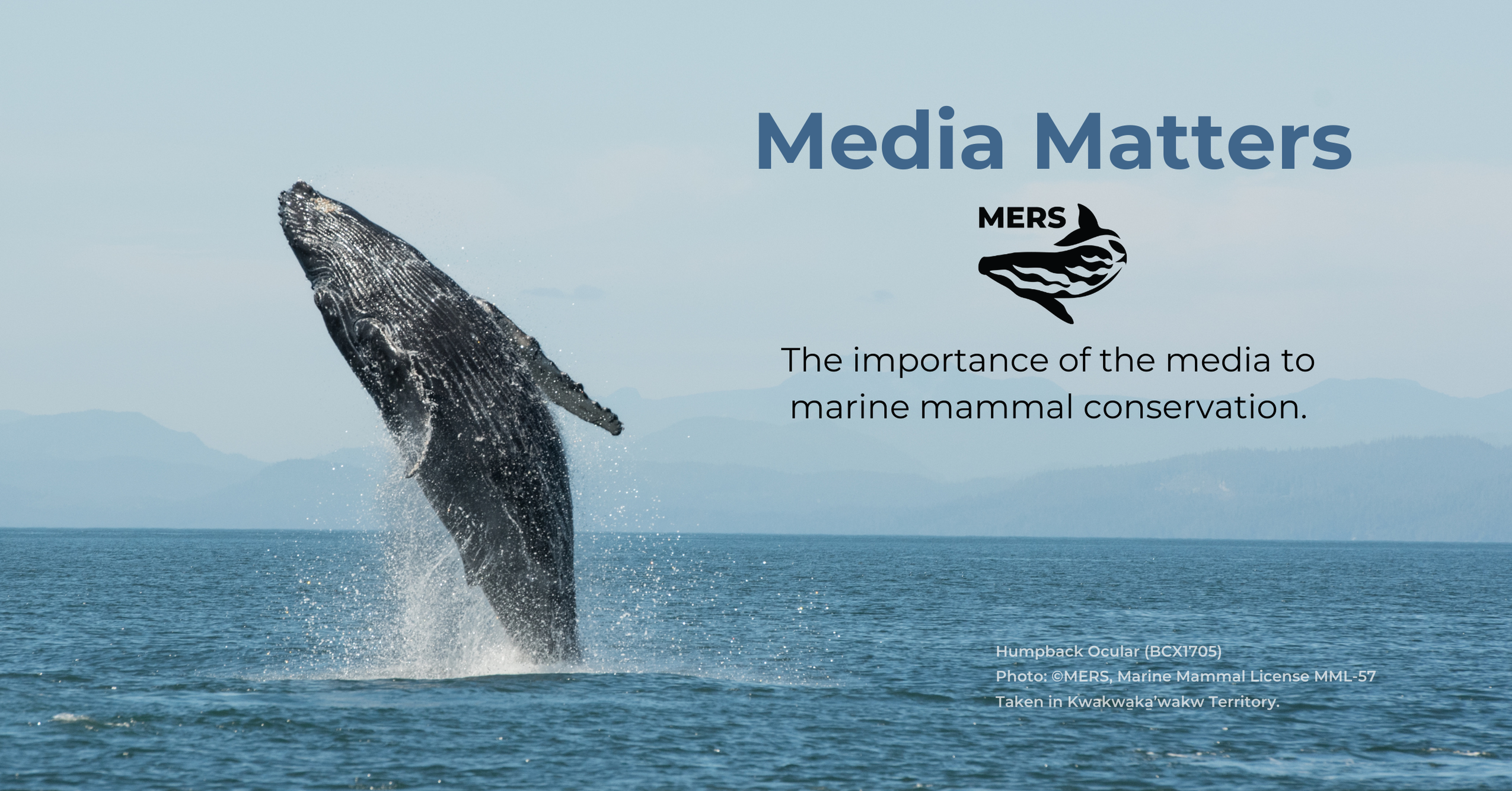Update Jan 2020.
Original post with background begins as of blue text.
Quotes/ content below from: Trites, AW and Rosen, DAS (eds). 2019. Synthesis of Scientific Knowledge and Uncertainty about Population Dynamics and Diet Preferences of Harbour Seals, Steller Sea Lions and California Sea Lions, and their Impacts on Salmon in the Salish Sea. Technical Workshop Proceedings. May 29-30, 2019. Marine Mammal Research Unit, University of British Columbia, Vancouver, B.C., 67 pages.
- There was a general consensus that data are insufficient at this time to make defensible model predictions and undertake a broad culling experiment.
- Making reliable predictions requires a better understanding of indirect effects of culling, food web relationships, and the factors that influence the major components of the ecosystem.
- Workshop participants repeatedly noted that additional data are needed on aspects of pinniped foraging. However, they were equally adamant that additional data are also needed on salmon, because ascertaining the impacts of predation is as much a salmon question as it is a pinniped question.
- Reducing uncertainty in estimated numbers of pinnipeds in the Salish Sea requires better census data. This can be improved by having greater transboundary coordination for aerial counts, increasing US survey efforts, and counting seals and sea lions in rivers. Count correction factors used to account for animals not seen on land during surveys also need to be updated to get more precise abundance estimates by regions and pinniped age-classes.
- Better pinniped diet data is required to address current uncertainties, including potential biases. Data are needed on species and size-class composition of diets, consumption rates, and other prey populations (such as herring and hake that dominate their diets). It is particularly important to obtain stock-specific salmon diet data to ascertain which salmonid populations are being consumed given divergence in stockspecific survival trends of indicator stocks. Addressing biases in diet description associated with basic methodology, geographic biases, small sample sizes of scats, and the sex and age of animals using the haulouts were also identified as research priorities.
- The potential impact of pinnipeds on salmon depends on the proportions of seals and sea lions that are salmon specialists, which likely vary by region and salmon life-histories. Greater attention should also be given to sea lion predation on adult salmon (as compared to the current primary focus on predation by seals on juvenile salmon).
- Finally, consideration needs to be given to the alternative hypothesis that bottom-up effects of food supply and food-web competition are primarily responsible for poor juvenile survival which inhibits recovery of salmon.
Original post March 2019.
The following is intended as a fact-based resource with regard to considerations around killing seals and sea lions off the coast of British Columbia. This resource will be updated with additional research and sources.
It has been catalyzed by our being asked questions by media and members of the public due to:
(1) The “Proposal for Commercial Harvesting of Pinnipeds* in British Columbia” which has been put forward to Fisheries and Oceans Canada by “Pacific Balance Marine Management” (previously named the Pacific Balance Pinniped Society / PBPS). *”Pinnipedia” is the group name (infraorder) to which seals, sea lions and walruses belong. The target pinniped species in the Proposal are Pacific Harbour Seals, Steller Sea Lions and California Sea Lions.
(2) Recent shootings and disturbances of pinnipeds leading to increased public attention to seal and sea lion populations in British Columbia.
Examples of March 2019 headlines:
What is the “Proposal for Commercial Harvesting of Pinnipeds in British Columbia”?
While the Proposal is not currently available to the public, there has been considerable media attention to the Proposal and the Pacific Pinniped Marine Management allowing for the following insights:
- The Proposal is for a harvest, not for sustenance hunting. Considerations include marketing the meat to China and Europe (Zussman, 2018 and PBPS, 2019).
- The rationale provided for the harvest includes the thinking that killing seals and sea lions would leave more Chinook salmon for endangered Southern Resident Killer Whales (currently at only 72 members in early 2020).
- Quotes provided by Pacific Pinniped Marine Management board members indicate that the proposal is for killing up to 50 percent of BC’s seals and sea lions (Rasmussen, 2018).
- The Proposal would have to receive Federal approval to be exempted from the Marine Mammal Regulations under which it is illegal to harm or disturb a marine mammal.
- The Pacific Pinniped Marine Management group “was established in July 2018 and includes a number of First Nations, commercial and sport fishers and fur industry representatives” (Larsen, 2019).
- The online presence of the Society is via Facebook at this link.
The screen shot above shows abundant sea lions during the fishery for Pacific Herring. It is from a video by Shalaine Lawson posted on social media on March 15th, 2019 . It is included here to help provide understanding of why there are frustrations and further negative emotions regarding seals and sea lions during these localized events where the overlap between humans and pinnipeds is extreme.
Emotions may be amplified as a result of concern for the endangered Southern Residents and the potential of additional fishing restrictions impacting livelihoods.
Great caution is required where emotions run high on both sides of an issue and may include animosity and vilification. In such cases, decisions with far-reaching consequences have high risk of being impacted more by politics and perception, than by facts and precaution.
Are seals and sea lions responsible for the decline in the numbers of endangered Southern Resident Killer Whales?
The number of Pacific Harbour Seals off the coast of British Columbia has not increased in 20 years. Yet the population of endangered Southern Residents has declined significantly. In fact, the total number of Southern Residents increased for a few years after the number of seals reached carrying capacity. See graphs below.
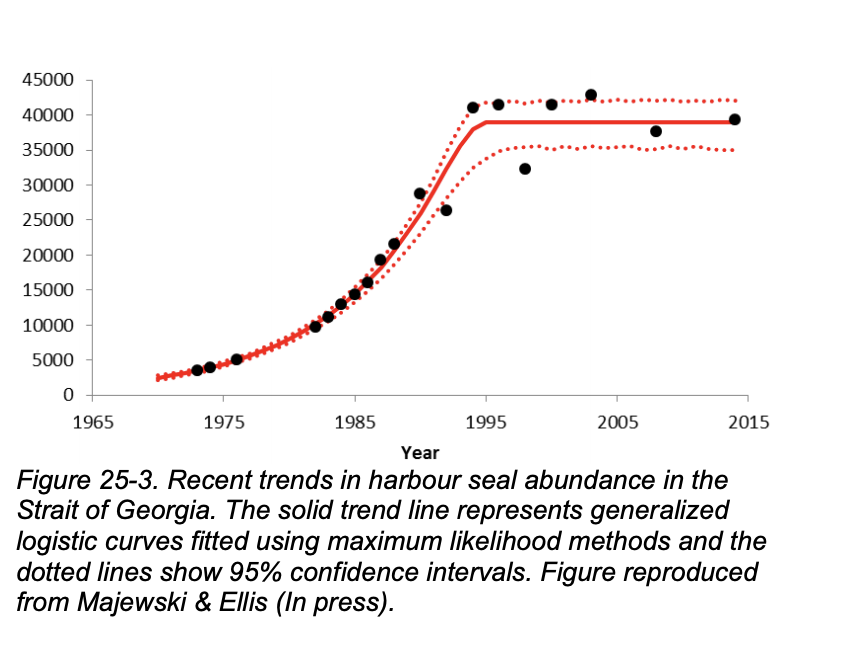 Source of above graph: Chandler et al, 2017.
Source of above graph: Chandler et al, 2017.
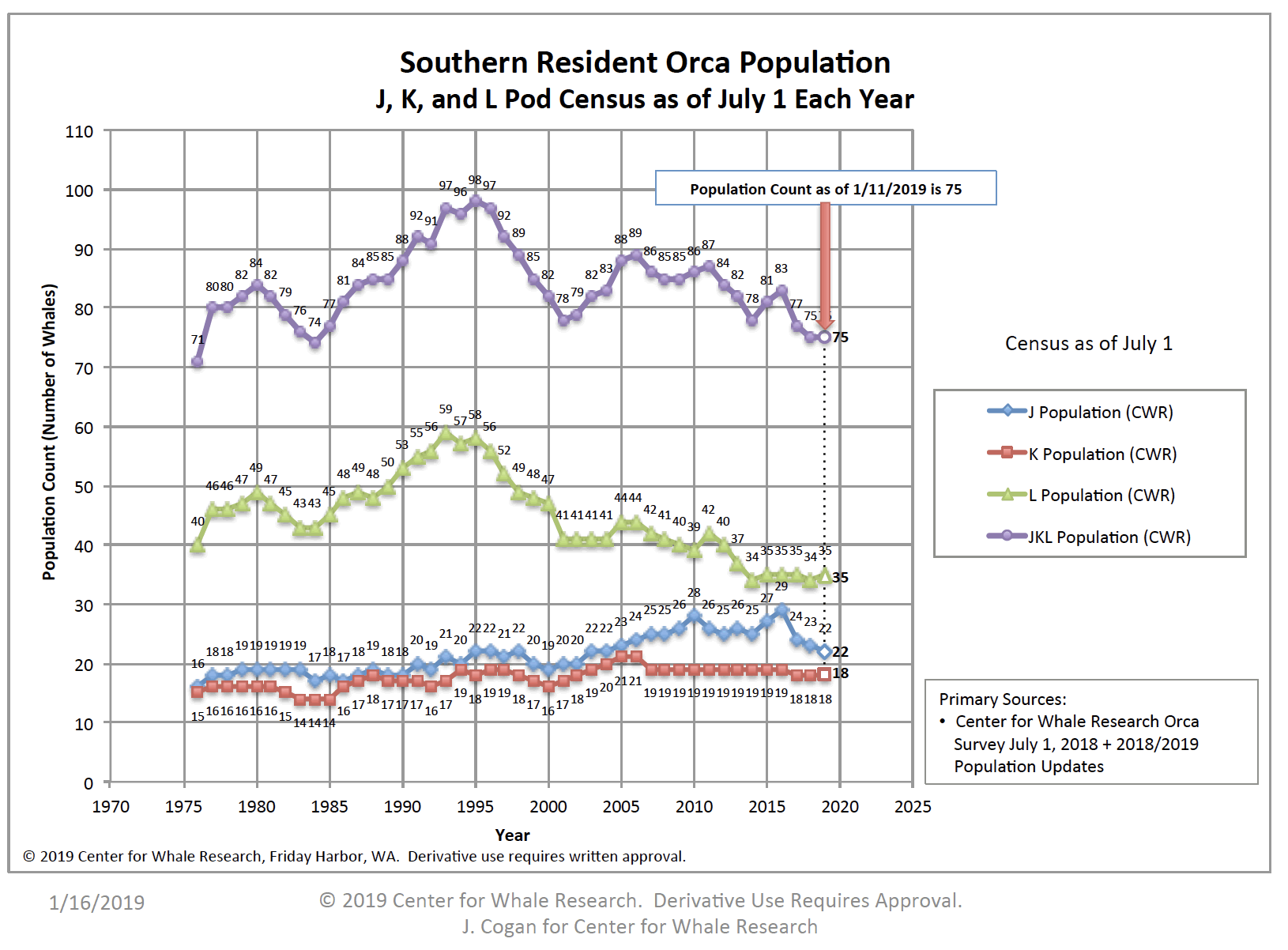
Source of above graph: Centre for Whale Research, 2019.
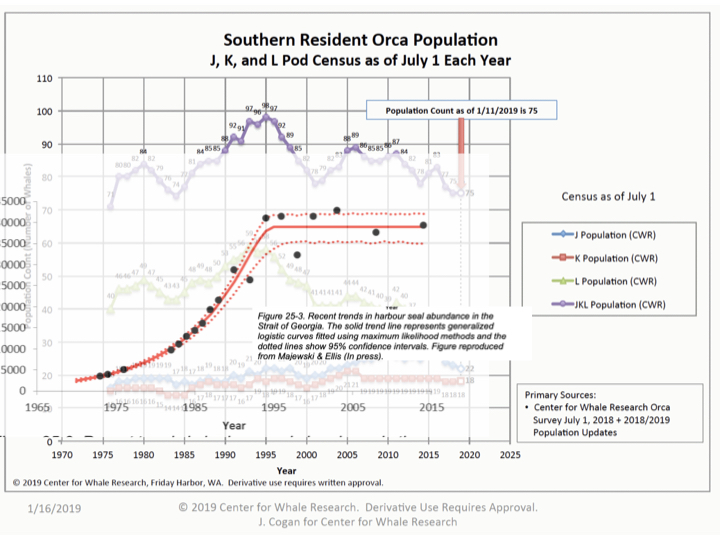
Steller Sea Lions are protected as a species of Special Concern under Canada’s Species at Risk Act. This means that they are an at-risk species that may become threatened or endangered because of a combination of biological characteristics and identified threats (Fisheries and Oceans Canada, 2010 with reassessment in 2013 and Chandler et al, 2017).
It is worthy of note that research near the Scott Islands, BC (Spalding, 1964) found that there was little evidence that historical culls had positive effects on salmon stocks. As quoted in COSEWIC, 2013 “there is little evidence that Steller Sea Lion control programs had any beneficial effect on fisheries as salmon catches did not increase noticeably following the reduction of sea lion numbers.”
California Sea Lion numbers have increased steadily since the 1970s. The population is reported to have reached carrying capacity as of 2008. However, research also found that population growth can decrease dramatically with increases in sea surface temperatures (research from NOAA Fisheries’ Alaska Fisheries Science Center and Southwest Fisheries Science Center, NOAA Fisheries, 2018 and Laake et al, 2018).
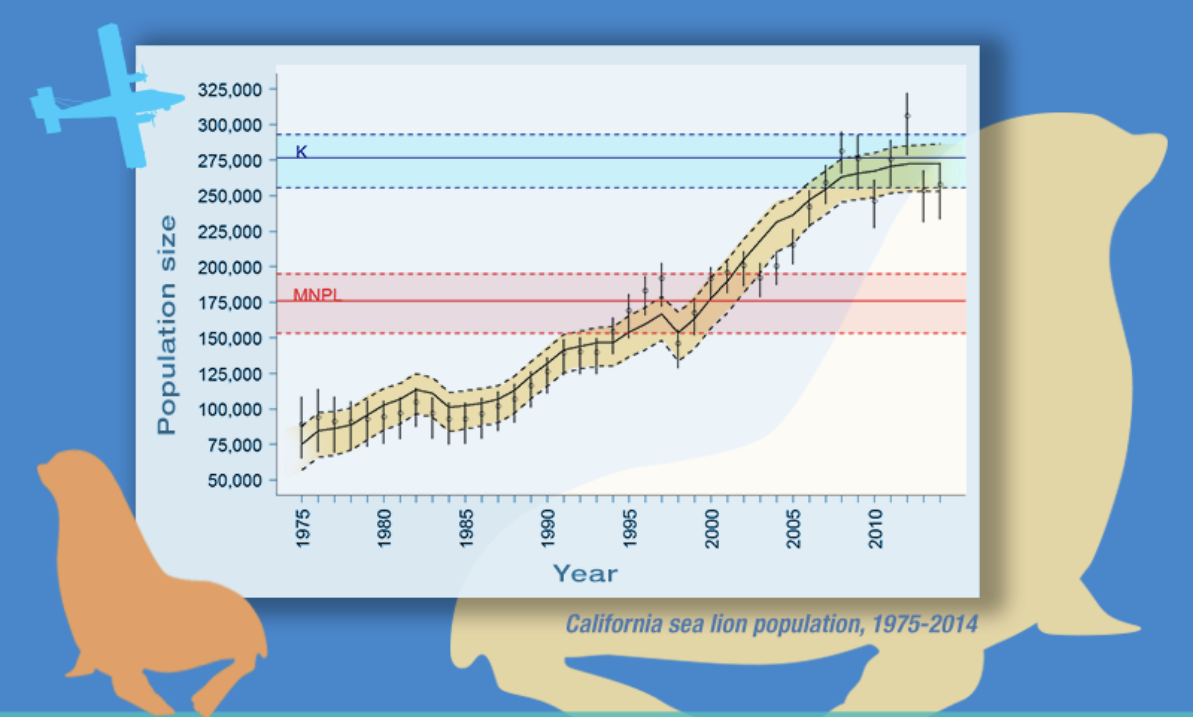
Source of above graph: NOAA Fisheries, 2018. Caption provided: “California Sea Lion numbers have grown steadily since the 1970s . . . The yellow band reflects the approximate population size, while K represents carrying capacity and MNPL is maximum net productivity level (the population level for maximum growth). The range above MNPL and below K is the optimum sustainable population, which the Marine Mammal Protection Act [USA] sets as the goal for protected species.”
See further detail on population numbers near the end of this blog.
What are potential unintended impacts for other species?
Impacts to Mammal-Eating Killer Whales
Seals and sea lions are of great importance in the diet of mammal-eating Killer Whales known as Bigg’s Killer Whales (also known as “West Coast Transients”).
This is a distinct population protected as threatened under Canada’s Species at Risk Act. They are genetically, acoustically, and culturally distinct from other Killer Whale populations.
It is believed that reductions in pinniped populations negatively impacted Bigg’s Killer Whales and that their recent resurgence is directly correlated to the number of seals.
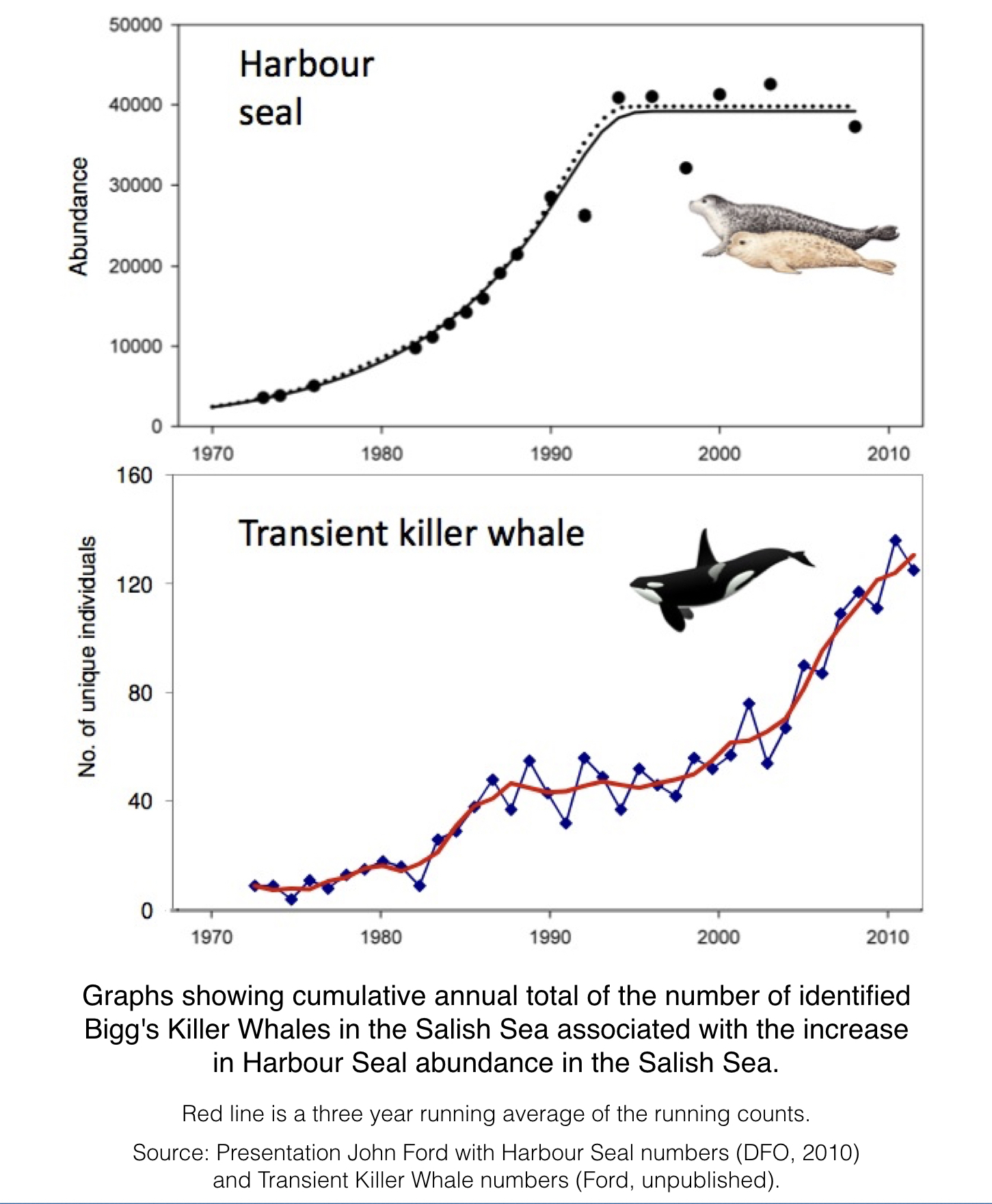
Further, maintaining sufficient prey availability for Bigg’s Killer Whales depends on more than just the overall number of seals, seal lions, and other prey species. They also need a sufficiently wide distribution of prey to be able to forage effectively.
Other considerations regarding potential ecosystem impacts?
Seals and sea lions are opportunistic predators that feed on other fish species, including Hake and Pacific Herring (Barrett-Lennard, 2018).
Hake feed on juvenile salmon. Thereby, a reduction in the number of pinnipeds could lead to an increase in the number of Hake, and thereby fewer salmon. (Barrett-Lennard, 2018).
Pacific Herring compete with juvenile salmon. Thereby, a reduction in the number of pinnipeds could lead to an increase in this salmon predator at salmon at a critical stage of their development. (Barrett-Lennard, 2018).
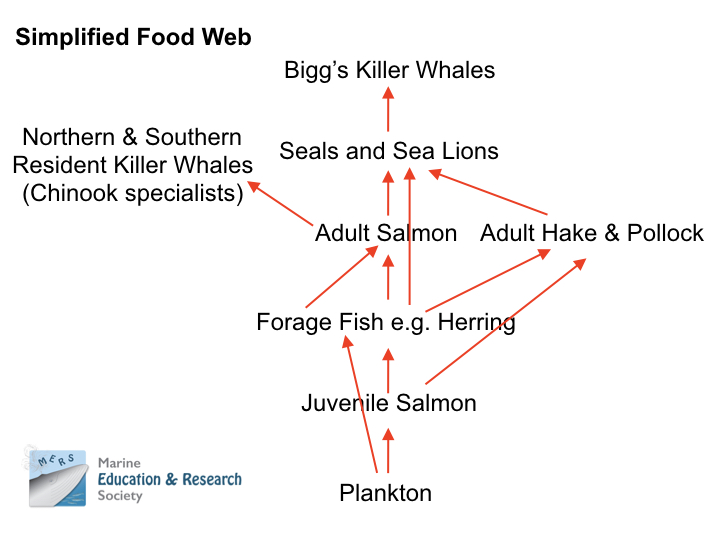 Note that there are more than 135 other species that predate on salmon in addition to seals and sea lions (Wallace, 2018).
Note that there are more than 135 other species that predate on salmon in addition to seals and sea lions (Wallace, 2018).
For further understanding of how to assess potential success of harvests or culls, please see the video and table below from the presentation “Will Seal Culls Save the Southern Resident Killer Whales“ by Dr. Lance Barrett-Lennard of the Coastal Ocean Research Institute provided at the 26th Annual BC Marine Mammal Symposium on November 24th, 2018.
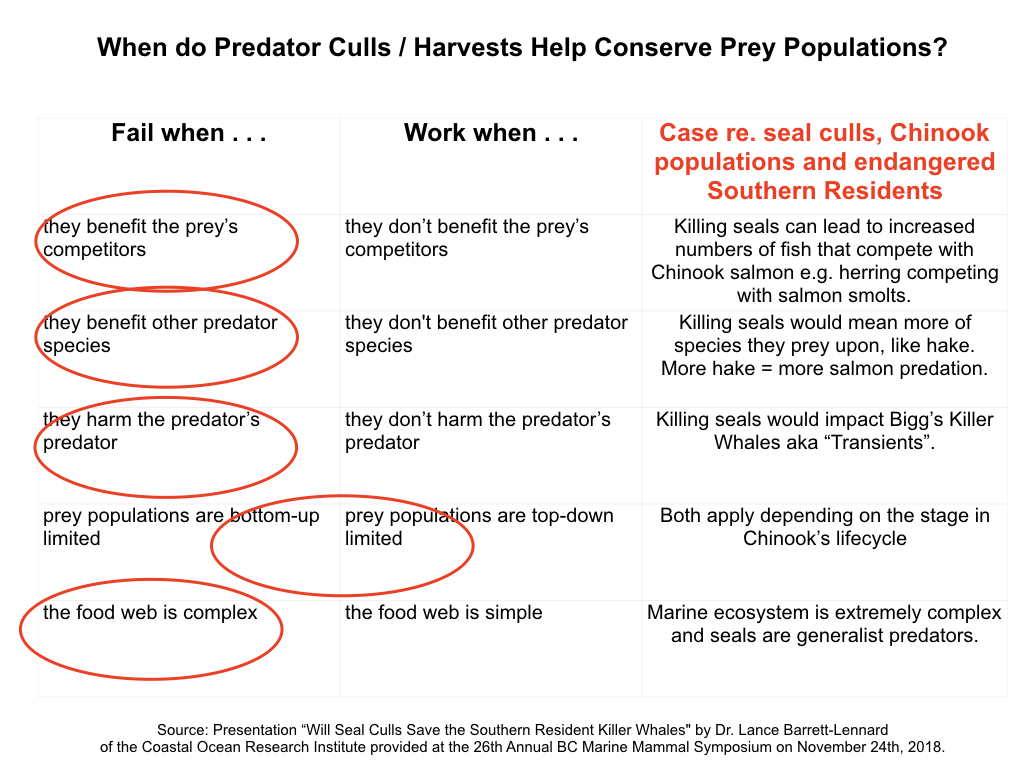
Do seals and sea lions eat a lot of salmon?
Some seals and sea lions in some areas eat a lot of salmon (and herring).
However, caution is very much needed in extrapolating these localized and seasonal studies to inform management decisions across larger geographic areas for larger units of time.
For example: Preliminary research by Sheena Majewski, DFO, using DNA analysis of non-estuary seal scat samples, reveals the following shift in diet between spring and fall. (Pynn, 2018).
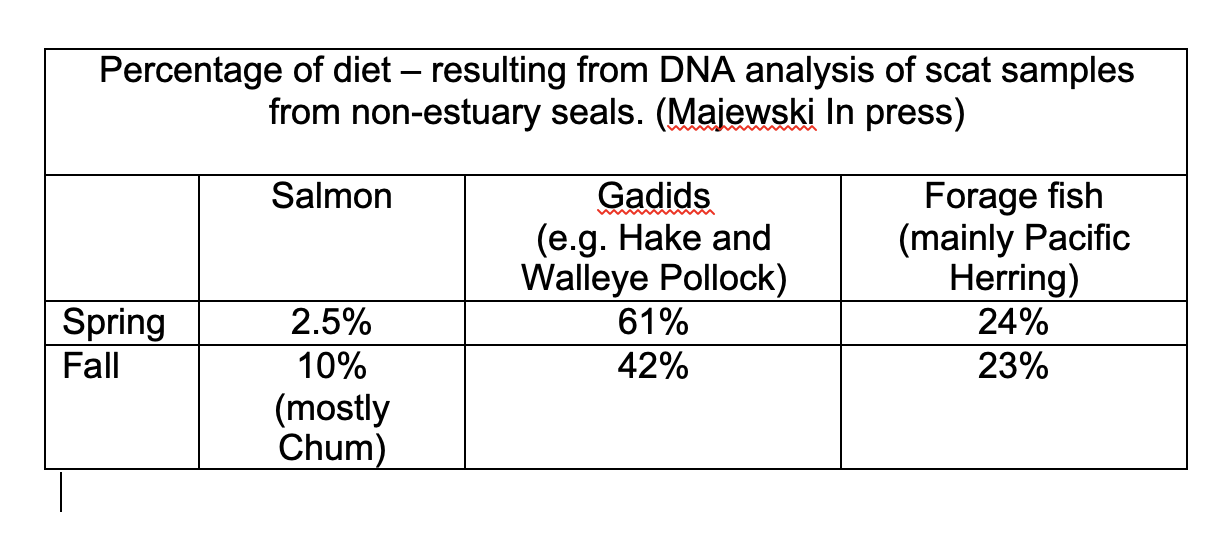
Further research is being conducted to better inform coast-wide and year-round understanding of seal and sea lion diet to address knowledge gaps. As per the information above however, due to the complexity of marine food webs, there will always be some uncertainty about their diet and how it impacts other species.
Further detail on population numbers and history of culling pinnipeds in British Columbia:
Updated estimates based on 2016-17 data anticipated for this fall/winter (2019).
“The Pacific Harbour Seal population in B.C. suffered significant declines as a result of commercial fur harvests (1879- 1914, 1962-1968) and predator control programs (1914-1964). By the time the species was first protected in B.C. in 1970, the coast-wide population had been reduced to an estimated 10,000 seals, but it has since increased dramatically (Majewski & Ellis In press). Current coast-wide abundance (approximately 105,000 seals) is considered to represent a successful recovery to pre-exploitation levels (Majewski & Ellis In press). In the Strait of Georgia, Harbour Seal numbers grew at a rate of 11.5% annually (95% CI 10.9-12.6%) from 3,600 individuals in 1973 to 39,000 in the mid-1990s, when numbers stabilized (Majewski & Ellis In press; Figure 25-3).” (Chandler et al, 2017).
“Steller Sea Lions were depleted by commercial harvesting and predator control programs that removed 55,000 animals between 1912 and 1968. By the 1970s, the B.C. breeding population had been reduced to 25-33% of peak historic levels (Olesiuk, 2018). The population began rebounding in the early 1970s, with non-pup numbers shifting from stable to 4.9% growth annually in the early 1980s (Figure 25-4). Pup abundance also exhibited an increase in annual growth rate in the mid-1980s, up from about 1.7 to 7.0% per year (Olesiuk In press). The summer 2013 breeding season survey estimated 39,200 (95% CI 33,600-44,800) Steller Sea Lions coast-wide, slightly lower than the winter 2009-2010 population estimate of 48,000 (95% CI 38,100-58,900) (Olesiuk, 2018). The Steller Sea Lion was designated as Special Concern by COSEWIC in both 2003 and 2013, and has also been legally listed under SARA at the same level” (Chandler et al, 2017).
“Market hunting, bounties, pollutants such as DDT and other forces depressed [California] sea lion numbers in the middle of the last century . . the species then rose from less than 90,000 animals in 1975 to an estimated 281,450 in 2008, which was roughly the carrying capacity for sea lions in the California Current Ecosystem at that time. It then fluctuated around that level, reaching a high of 306,220 in 2012 before declining below the carrying capacity in the years since as ocean conditions changed” (NOAA Fisheries, 2018).
Sources:
Badelt, Brad. (2018, September 4). Are There Too Many Harbour Seals in British Columbia? Hakai Magazine.
Barrett-Lennard, L. (2018, November 24). Will Seal Culls Save the Southern Resident Killer Whales? Presentation provided at the 26th Annual BC Marine Mammal Symposium.
Center for Whale Research. (2019, January 16). Southern Resident Killer Whale Population. Retrieved from https://www.whaleresearch.com/orca-population.
Chandler, P.C., King, S.A., and Boldt, J. (Eds.). 2017. State of the physical, biological and selected fishery resources of Pacific Canadian marine ecosystems in 2016. Can. Tech. Rep. Fish. Aquat. Sci. 3225: 243 + vi p.
COSEWIC. 2013. COSEWIC assessment and status report on the Steller Sea Lion Eumetopias jubatus in Canada. Committee on the Status of Endangered Wildlife in Canada. Ottawa. xi + 54 pp.
Fisheries and Oceans Canada. 2007. Recovery Strategy for the Transient Killer Whale (Orcinus orca) in Canada. Species at Risk Act Recovery Strategy Series. Fisheries and Oceans Canada, Vancouver, vi + 46 pp.
Fisheries and Oceans Canada. 2010. Management Plan for the Steller Sea Lion (Eumetopias jubatus) in Canada [Final]. Species at Risk Act Management Plan Series. Fisheries and Oceans Canada, Ottawa. vi + 69 pp.
Fisheries and Oceans Canada. 2010. Population Assessment Pacific Harbour Seal (Phoca vitulina richardsi). DFO Can. Sci. Advis. Sec. Sci. Advis. Rep. 2009/011.
Fisheries and Oceans Canada. 2013. Information in Support of the Identification of Critical Habitat for Transient Killer Whales (Orcinus orca) off the West Coast of Canada. DFO Can. Sci. Advis. Sec. Sci. Advis. Rep. 2013/025.
Fisheries and Oceans Canada. 2018. Amended Recovery Strategy for the Northern and Southern Resident Killer Whales (Orcinus orca) in Canada. Species at Risk Act Recovery Strategy Series, Fisheries & Oceans Canada, Ottawa, ix + 83 pp.
Ford, J.K.B., G.M. Ellis, and J.W. Durban. 2007. An assessment of the potential for recovery of West Coast transient killer whales using coastal waters of British Columbia. DFO Can. Sci. Advis. Sec. Res. Doc. 2007/088. Iv + 34 pp.
Ford, John & Stredulinsky, Eva & Towers, Jared & M. Ellis, Graeme. (2013). Information in Support of the Identification of Critical Habitat for Transient Killer Whales (Orcinus orca) off the West Coast of Canada.
Gammon, Katherine. (2018, October 16). Herschel, the Very Hungry Sea Lion – It’s dangerous to blame the decline of one species on a single predator. We humans like to do it anyway. Hakai Magazine.
L. Laake, Jeffrey & S. Lowry, Mark & L. Delong, Robert & R. Melin, Sharon & Carretta, James. (2018). Population growth and status of California sea lions: Status of California Sea Lions. The Journal of Wildlife Management. 10.1002/jwmg.21405.
Larsen, Karin. (2019, February 7). B.C. group hopes commercial seal hunt gets green light. CBC News. Retrieved from www.cbc.ca/news/canada/british-columbia/commercial-seal-hunt-dfo-1.5007895
NOAA Fisheries. (2018, January 17). California Sea Lion Population Rebounded to New Highs. Retrieved from https://www.fisheries.noaa.gov/feature-story/california-sea-lion-population-rebounded-new-highs
Olesiuk, P.F. 2010. An assessment of population trends and abundance of harbour seals (Phoca vitulina) in British Columbia. DFO Can. Sci. Advis. Sec. Res. Doc. 2009/105. vi + 157 p.
Olesiuk, P.F. 2018. Recent trends in Abundance of Steller Sea Lions (Eumetopias jubatus) in British Columbia. DFO Can. Sci. Advis. Sec. Res. Doc. 2018/006. v + 67 p.
Pynn, Larry. (2018, January 12). Behind the Blubber – Harbor seals are blamed for chinook and coho salmon declines, but ecosystems are more complicated than some suggest. Hakai Magazine.
Rasmussen, Greg. (2018, September 12). B.C. group wants to kill seals and sea lions to save the whales. CBC News. Retrieved from www.cbc.ca/news/canada/british-columbia/b-c-group-kill-seals-save-whales-1.4818745
Ross, Peter & Barrett-Lennard, Lance. (2018, July 30). Peter Ross and Lance Barrett-Lennard: Harbour seals are easy scapegoats in Chinook salmon decline. Vancouver Sun. Retrieved from https://vancouversun.com/opinion/op-ed/peter-ross-and-lance-barrett-lennard-harbour-seals-are-easy-scapegoats-in-chinook-salmon-decline.
Spalding, D. J. 1964b. Comparative feeding habits of the fur seal, sea lion and harbour seal on the British Columbia coast. Fisheries Research Board of Canada Bulletin 146:1-47.
Trites, AW and Rosen, DAS (eds). 2019. Synthesis of Scientific Knowledge and Uncertainty about Population Dynamics and Diet Preferences of Harbour Seals, Steller Sea Lions and California Sea Lions, and their Impacts on Salmon in the Salish Sea. Technical Workshop Proceedings. May 29-30, 2019. Marine Mammal Research Unit, University of British Columbia, Vancouver, B.C., 67 pages.
Trzcinski, M.K. 2020. Synthesizing scientific knowledge about population dynamics and diet preferences of harbour seals, Steller sea lions and California sea lions, and their impacts on salmon in the Salish Sea Workshop 2: November 20-21, 2019, Bellingham, WA. Can. Tech. Rep. Fish. Aquat. Sci. 3403: x + 50 p
Wallace, Scott. (2018, December 23). Island Voices: Ideology, not ecology, guiding sea-cull decisions. Times Colonist.
Zussman, Richard. (2018, July 20). New group calls for seal and sea lion cull on B.C.’s coast. Global News. Retrieved from https://globalnews.ca/news/4344527/new-group-seal-sea-lion-cull-bc-coast/


